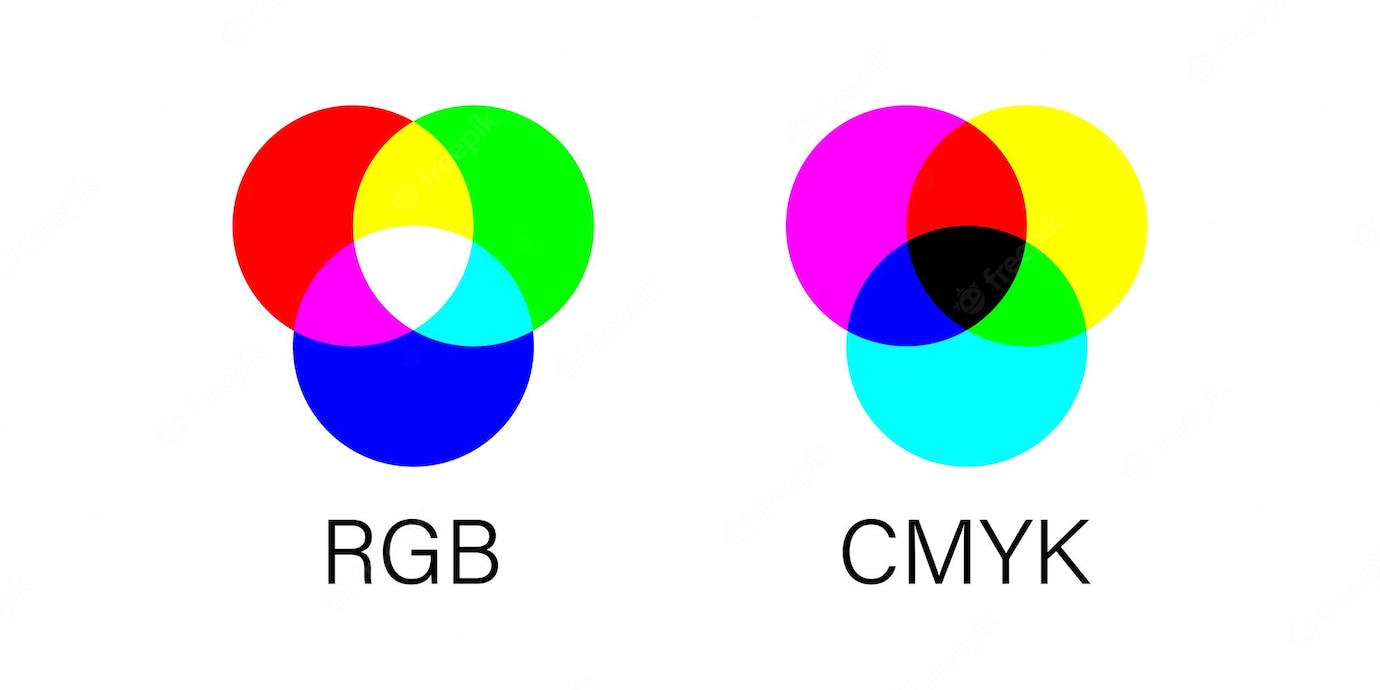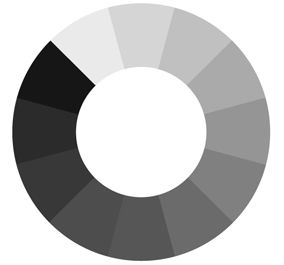What is Color Theory? Fundamentals of Color Theory for Design
September 12, 2024
Summary: For designers, understanding color relationships is crucial for visually pleasing designs. This article "What is Color Theory?"explores color theory basics, different color types, and how to use them effectively for visual appeal.
Color is a fundamental aspect of human aesthetic appeal. It is not only concerned with organic things in the world, but also with man-made products or design features.
Color theory and the various words and terms play an important role in all design programs, as far as a design student is concerned.
A person looking for a design course should have a sense of color and be able to understand various terms associated with it.
It is important to know about the color theory for designers to begin their journey.
What is Color Theory?: Understanding Color
Color is associated with perception.
Our eyes see something (for example, the sky), and data sent from our eyes to our brains tells us it's a specific color (blue). Objects reflect light in various wavelength combinations. Our brains detect these wavelength combinations and convert them into the phenomenon known as color.
What do you look for as you stroll down the soft drink aisle, scanning the shelves filled with 82 million cans and bottles in search of your six-pack of Coke? Is it the scripted logo or the well-known red can?
In 90 seconds or less, people decide whether or not they like a product. Color accounts for 90% of that decision as a designer.
Check: Top Design Entrance Exams in India
“Color is associated with perception. Our eyes see something (for example, the sky), and data sent from our eyes to our brains tells us it's a specific color (blue). Objects reflect light in various wavelength combinations. Our brains detect these wavelength combinations and convert them into the phenomenon known as color.”
What is Color Theory?: Different color schemes
Color theory for design exams are as follows. Here are different types of colors:

Check out our website for Colour Theory PDF notes and practise fundamentals of Color Theory for Design Exam questions and answers.
Warm Color Scheme
Warm colors include orange, red, and yellow, as well as mixtures of these and similar colors.
As the name implies, they make you think of warm things like sunlight and heat. Warm colors appear to come closer or advance visually (as do dark colors), which is why they are frequently used to make large rooms appear cozier.
If you want to make a large bedroom appear more intimate, paint it a warm color like terra-cotta or brown to make it feel cozier.
Check: JEE Main Paper 2 Mock Tests
Cold Color Scheme
Blue, green, and light purple are examples of cool colors.
They can calm and soothe. Whereas warm colors are associated with heat and sunlight, cool colors are associated with water, the sky, ice, and snow.
Cool colors, as opposed to warm colors, appear to recede, making them ideal for small rooms that need to appear larger.
If you have a small bedroom or powder room that you want to visually enlarge, try painting it a light blue color to make it appear larger.
What is Color Theory? Complementary Color Scheme

When it comes to color pairing, choosing complementary colors can help you achieve harmony. Opposites attract in this case.
This color scheme incorporates two colors from the opposite side of the color wheel. When you do this, you get a high-contrast color combination that is bright and pops.
Red and green, yellow and purple, orange and blue, and green and magenta are examples of complementary color combinations.
Check: Important drawing questions for JEE Main Paper 2 exam
What is Color Theory? Split Complementary Color Scheme
A split-complementary color scheme includes a primary color and two secondary colors.
The complementary color scheme is similar, but one of the complements is split.
The split complementary color scheme is adaptable, pleasing, and simple to implement.
It has the same advantages as a complementary color scheme in terms of contrast and balance between warm and cool color temperatures.
However, some people believe it is easier to work with because the colors are more subtle and create less tension.
Check: NATA Basic Preparation Strategies
What is Color Theory? Analogous Color Scheme
Analogous colors are groups of three colors on a color wheel that are next to each other, such as violet, red-violet, and red.
When we group these colors, we call it an analogous color scheme.
Because the other two colors contain that center color, the color in the center of this group of three is sometimes referred to as the mother color.

Similar color schemes create a visually appealing and calming display.
Blue, for example, can look great with both teal and green.
They usually go well together and produce serene and comfortable designs.
Analogous color schemes are common and harmonious.
Check: Best Books for Design Entrance Exams
What is Color Theory? Triad Color Scheme

A triadic color scheme, like analogous, is simpler to grasp than it may appear.
Instead of grouping three or more colors that are adjacent to each other on the color wheel, you'll take three equally spaced colors and decorate your space with these beautiful, contrasting shades.
This, too, will create a harmonious look, but instead of the slightly ombre or monochromatic styling, it's much more interesting and joyful.
Check: NATA study plan
What is Color Theory? Tetrad Color Scheme
A tetradic color scheme is an excellent variant of the twin color scheme that has an equal distance between all colors.
Because the four colors are distributed evenly around the color wheel, there is no clear dominance of one color.
Because it uses four colors organized into two complementary color pairs, the tetradic (double complementary) scheme is the richest of all the schemes.

Tetrad is a very aggressive color scheme that requires careful planning and an emotional approach to color relationships.
What is Color Theory? Square Color Scheme
A square color scheme is based on the concept of using colors that are evenly spaced. Furthermore, the color palette for this scheme type is chosen based on the order of the color wheel.

If you choose to include red in your square color scheme, the other colors in your scheme will be blue-violet, green, and yellow-orange.
But wait, there's more. Regardless of the main color you use, you can create your square color schemes.
Check: NATA entrance exam
What is Color Theory? Achromatic Color Scheme
Chromatic and achromatic colors are color groups that can be used to create a specific look or feel in art, photography, or interior design.
Saturation is a key factor in differentiating one from another.
The saturation of a color determines its intensity and vividness. Whether a color is chromatic or achromatic is determined by the presence or absence of saturation.

Chromatic colors are those that have only one dominant wavelength.
Blue and green are examples of such colors. They are known as pure colors.
There is no dominant hue in achromatic colors. They are colors that contain equal amounts of all wavelengths, such as white, black, and grey.
Shaded or tinted colors are achromatic colors.
Check: Career Opportunities in Design
Importance of Color Theory for Design Exams
The importance of color theory for design exams cannot be overstated. Here are several key reasons why a solid grasp of color theory is crucial for success in design exams:
Visual Harmony: Color theory enables designers to create visually pleasing and harmonious compositions. Understanding how colors interact and complement each other ensures that designs are aesthetically pleasing.
Effective Communication: Colors convey emotions, moods, and messages. Designers who understand color theory can effectively communicate their intended message through color choices, ensuring that their designs resonate with the target audience.
Brand Identity: Many design projects involve creating or maintaining a brand's identity. Consistency in color choices is essential for brand recognition and establishing a strong visual identity.
Problem Solving: Design exams often include real-world design challenges. Color theory provides designers with problem-solving skills, allowing them to make informed decisions when faced with design dilemmas.
Creativity and Innovation: While understanding the fundamentals of color theory is essential, it also provides a foundation for creative experimentation and innovation. Designers who are well-versed in color theory can push the boundaries of traditional design and create unique and memorable work.
Professionalism: Designers who demonstrate a strong understanding of color theory in their work are more likely to be viewed as professionals in the field. This can lead to career opportunities and recognition within the design industry.
Check: JEE Main paper Preparation Strategy
Conclusion
Understanding color theory is essential for anyone venturing into the world of design. It serves as the backbone for creating visually captivating and harmonious compositions. Aspiring designers preparing for entrance exams now possess a foundational understanding of color relationships, types, and their applications. This knowledge equips them to wield the power of colors purposefully, unlocking endless possibilities for innovative and compelling designs in their future endeavors.
Check: NATA 2024 Exam Pattern
Frequently Asked Questions
What are the technical requirements needed to attend the Design IFAAA Online Coaching?

What are the benefits of Design IFAAA Coaching?

Do you provide Mock test series for Design IFAAA Coaching?

What is the selection procedure for NIFT Undergraduate Bachelor of Design Course?

Is taking fashion designing a good career?

Do I need to make notes while preparing from the best books for design entrance exams?

Can I get Previous Year Paper Books for Design Entrance Exams?





